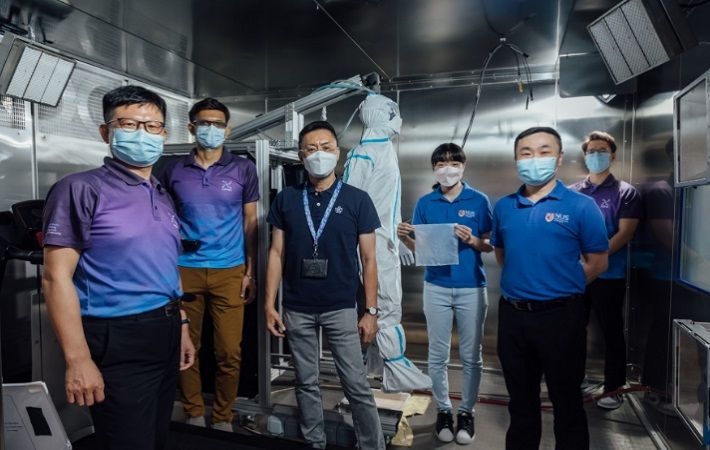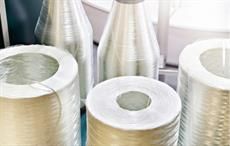
This invention was validated through laboratory tests conducted in collaboration with researchers from HTX (Home Team Science & Technology Agency) in Singapore. The new desiccant film, which is biocompatible and non-toxic, has fast absorption rate, high absorption capacity and excellent mechanical properties. This means that the material is very robust and durable for practical applications such as for protective suits worn by healthcare workers. It is also affordable, light-weight, easy to fabricate and reusable.
“Under room temperature of about 35°C, a healthcare worker who dons a protective suit for one hour typically experiences a heat index of about 64°C. This causes discomfort and prolonged thermal strain can result in heat stroke and even death. Our novel composite moisture-trapping film achieves a cooling effect within the protective suit via evaporative cooling – by increasing sweat evaporation from the skin,” explained research team leader assistant professor Tan Swee Ching, who is from the department of materials science and engineering under the NUS College of Design and Engineering.
This research breakthrough demonstrates the positive outcome of leveraging the complementary strengths of NUS and HTX to create tangible benefits for the Home Team and the wider community. By combining the NUS team’s scientific knowledge of advanced hydrogel materials and HTX’s deep understanding of the Home Team’s needs and engineering capabilities, the joint research team was able to customise and optimise the novel moisture-trapping material for practical applications to enhance the performance and productivity of frontline officers, NUS said in a press release.
The NUS team came up with a practical strategy to overcome the current challenges by leveraging the principle of evaporative cooling. Their solution involves using a super-hygroscopic composite film to control the humidity level in the micro-environment in the protective suit. When the moisture-trapping composite film absorbs water vapour within the protective suit, the humidity level drops. This in turn speeds up sweat evaporation from the skin. As a result, more heat is dissipated from the human body through sweating, providing thermal comfort for users such as healthcare workers.
To examine the effectiveness of their solution, the NUS team conducted tests in collaboration with researchers from HTX, using a 20-zone ‘Newton’ manikin within a climatic chamber. This is an important experimental milestone in assessing the feasibility of applying the composite film to the scale of full body clothing.
With the composite film, relative humidity (RH) under moderate sweating conditions dropped by about 40 per cent - from 91 to 48.2 per cent after one hour of sweating and to 53.2 per cent after two hours of sweating. The team also found that within the first hour of sweating, the heat index or ‘felt air temperature’ dropped significantly from 64.6°C to 40°C at air temperature of 35°C. At this level, while users still feel hot, the likelihood of getting heat stroke, heat cramps and heat exhaustion is remarkably reduced.
“These experiments show that our moisture-trapping film effectively reduces the RH inside the protective suit, hence bringing the heat index down significantly and improving the thermal comfort for users,” Tan explained.
In another laboratory experiment, the research team also showed that body temperature (or skin temperature) could be significantly reduced by 1.5°C through evaporative cooling. This further proves that the composite film can potentially help users – such as healthcare workers, soldiers or firefighters – relieve thermal stress, especially during strenuous activities.
Regeneration of the NUS team’s composite film is also more energy efficient, as it requires a lower temperature to release the trapped moisture. At 50°C, the composite film releases 80% of its water contents after 10 minutes and this reaches 95 per cent after 40 minutes. Most hygroscopic materials regenerate at a temperature of more than 100°C, over a duration of more than an hour.
“From the findings of various studies in this project, we are hopeful that the moisture-trapping film can be embedded to Personal Protective Equipment (PPE) and/or Personal Protective Clothing (PPC) of the Home Team officers, to enhance thermal comfort and improve performance of the frontline officers,” said Ying Meng Fai, director, Human Factors & Simulation Centre of Expertise, at HTX.
Fibre2Fashion News Desk (RR)

